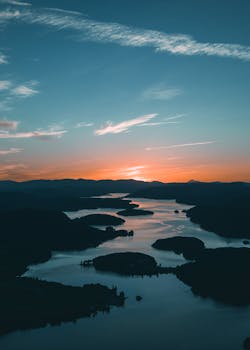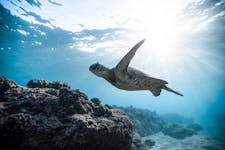
How Water Photographers Can Protect Ocean Life
Underwater photography offers so many opportunities for beautiful photos. But how can photographers go beyond aesthetics to tell deeper stories about marine life?
Photographer Stephanie Dandan shares her perspective on how photography can help protect oceans and underwater life.
Water can cleanse you—physically and mentally.
When you photograph an element that you cannot control, it instantly puts you in the present moment.
Perhaps this is one of the reasons so many photographers are drawn to shooting ocean landscapes, underwater marine life, and surf photography. And if you find yourself drawn to photographing water, sooner or later you’ll feel the need to protect what you see and what you’ve come to love.
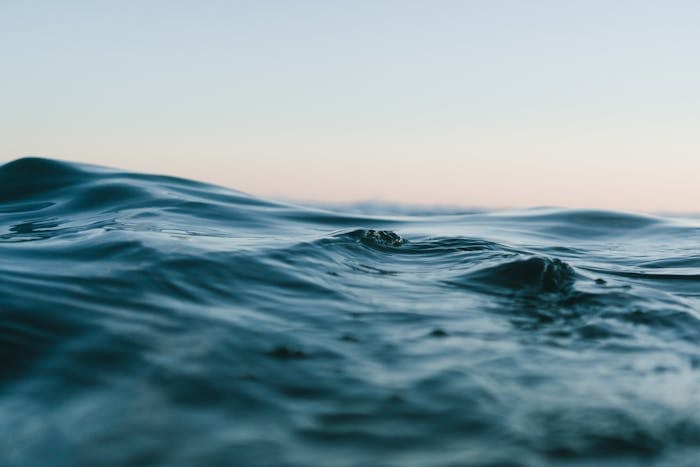
There's something magical about photographing the ocean.
Photo by Matt Hardy · View Photo
I’ve been shooting travel, lifestyle, and water photography for years and it has taken me to some of the most beautiful places I have ever set foot in. Witnessing the magnificence of islands and beaches all over the world has inspired me to shoot in water and the lifestyle surrounding it.
It also motivated me to ask questions and find ways to do more, travel consciously, and leave the place better than when I found it.
Here are some ways all photographers who love the ocean can help protect it through water photography.
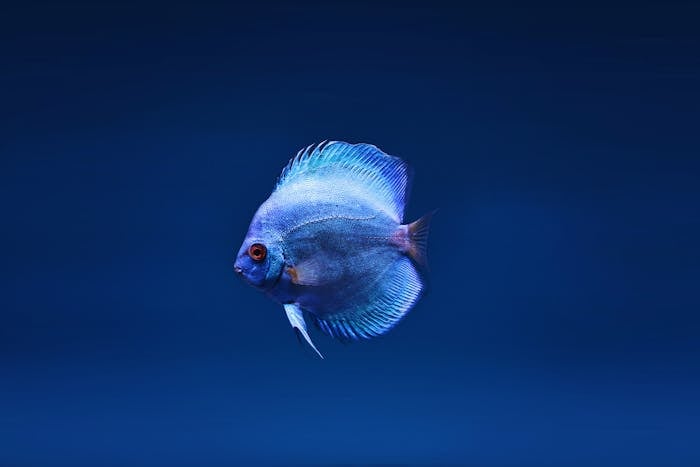
Underwater life offers amazing opportunities for close-up photos.
Photo by Lone Jensen · View Photo
Do your research.
Getting to know the place that you’re in by immersing yourself in the local community is a good place to begin. Before going to your destination, it’s best to do your research.
When I was traveling all over Southeast Asia for almost a year I saw the best and the worst of the impact that tourism had in local communities. I went to places like the Southern Thai Islands, the Cambodian islands, the Gili Islands, the Philippines Islands—and saw firsthand how hedonism and lack of awareness of travelers can directly impact the overall wellness of these beach communities.
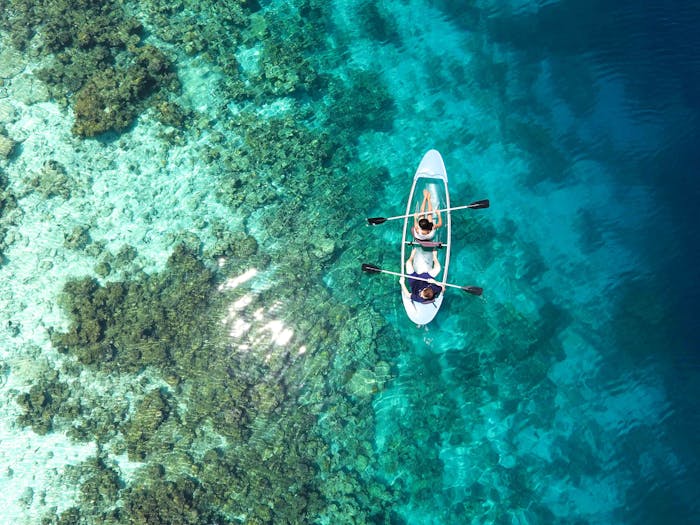
Get informed and do your research before a marine photo trip.
Photo by Asad Photo Maldives · View Photo
Some islands have been built for the tourism industry for many years—but the more remote ones are not.
When these “remote” places become newly discovered and an influx of tourists come in, they don’t have the structure or system to sufficiently handle the industry boom. Their waste management system becomes overwhelmed, water and air pollution becomes a significant problem, and the community undergoes a drastic change before they can even fathom what’s about to come.
This is why it’s important to educate yourself and others on the environmental conditions of a place before taking the trip.
Keep your carbon footprint low.
When you get to your destination, try your best to keep your carbon footprint low. This means bringing your own water bottle, reusable bag, reusable straws, buying toiletries and body products that are environmentally friendly and contain very little to no packaging.
Choose to purchase sustainable products like reef-friendly sunscreen and chemical-free shampoo. Avoid plastic, avoid any unnecessary trash, and if you need to dispose of your product bring it with you until you can recycle it.

Avoid standing on reefs while underwater—they can be fragile.
Photo by Francesco Ungaro · View Photo
When you’re in the water do not stand on reefs, don’t collect shells, sand, or attempt to capture any marine animals. You can honor them by simply observing and documenting them.
Participate in beach clean ups and recycling events, and support businesses that practice a daily eco-conscious lifestyle. You could tell their story by promoting them on social media, or by starting a photography project that shows how much positive change a conscious lifestyle can make.
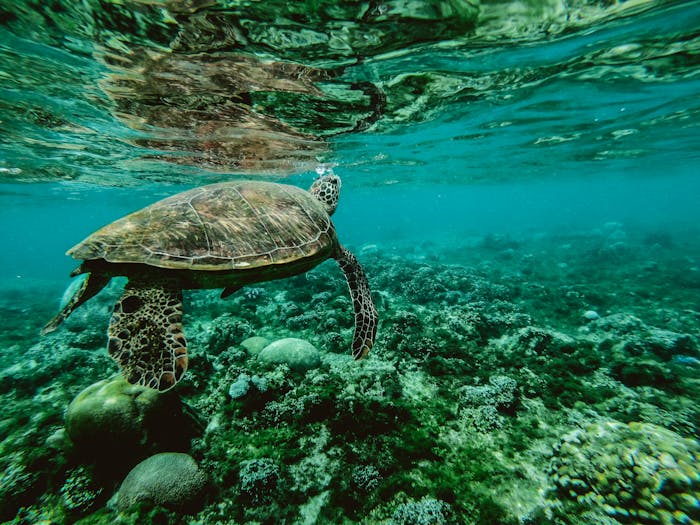
Learn about the animals you're photographing to better tell their stories.
Photo by Belle Co · View Photo
Find and support people, businesses, and organizations that protect the oceans.
The best way to get to know the environmental atmosphere of a place is to get to know its people. If they love it, there’s a good chance that most of them will do anything to protect it. Storytelling loses its essence without the subjects that make the story worth telling in the first place.
You could potentially focus on the creatures of the sea, but you could also enlighten people by highlighting the ones that guard it. If you’re in a beach town or an island and it’s relatively small, everyone knows everyone. Water athletes with an ecology or sustainability background could be great subjects to focus on. You can shoot them while they’re in action in the water, or during their volunteer efforts on the island.
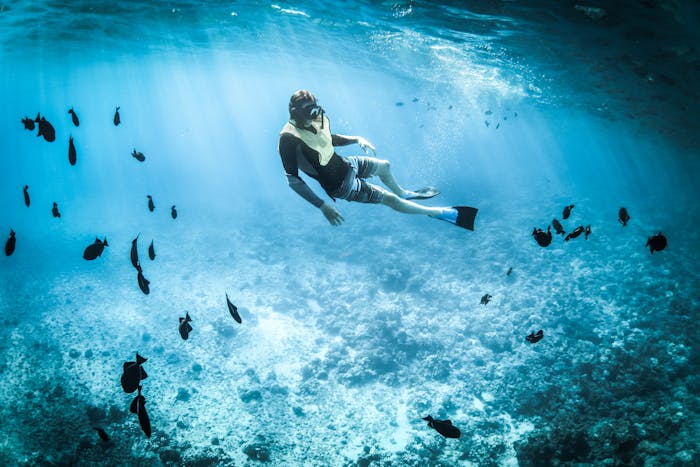
People can also make great subjects for underwater photos.
Photo by Miles Hardacre · View Photo
Tell their stories.
Dig deep and find a story worth telling. From the female surfer who’s started an initiative to ban plastic bags, or the business owner who’s leading beach clean ups, or the local fishermen protecting the mangroves—these people are the ones you need to bring attention to.
Magnify these people and bring attention to the work that they’re doing. Through this, you can shed light on these issues by expressing it for the world to understand and help find solutions.
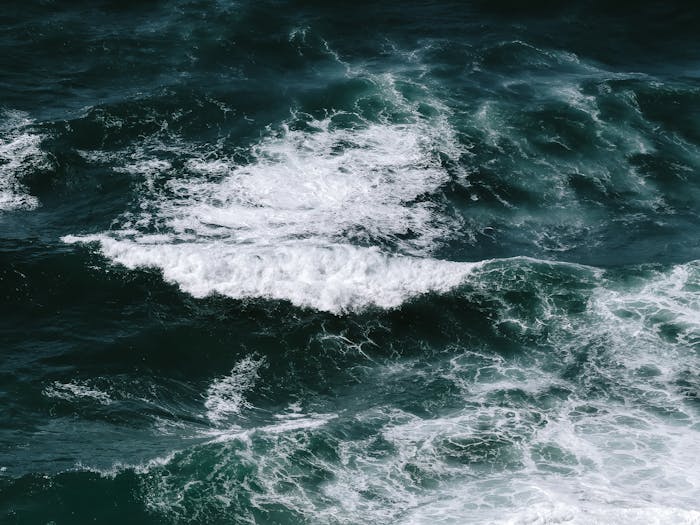
The simple motion of waves makes for a beautiful shot.
Photo by Tyler Lastovich · View Photo
Observation and complete presence is key to water photography.
There are various ways to shoot water: underwater, surfing, marine life, landscapes, waves, conceptual and macro water shots. There’s a myriad of styles you can choose to immerse yourself in. No matter what you choose, you must surrender to complete observation first.
Study how the water moves and learn how light and water coexists. Pay attention to the smallest details such as ripples, crests, foam, splashes; then you’ll start to understand that the ocean breathes too.
Then you’ll be able to tell stories that could help shape other people’s perspective of the ocean, and inspire them to adapt their lifestyles and habits to help protect it.
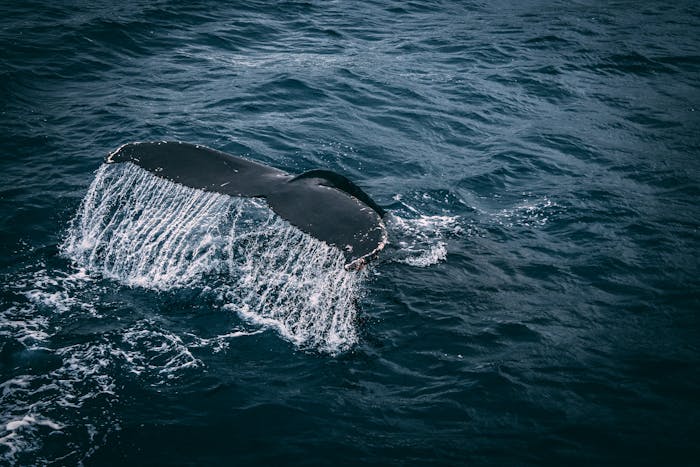
This photo perfectly captures the power and movement of the whale, even though we only see its tail.
Photo by Rudy Kirchner · View Photo
Taking photos of the ocean is one way to expand environmental awareness. Then ask yourself what kinds of conversations you want to open up for your readers or followers, to help them gain awareness of the issues in each place. How can they learn how to appreciate and be present with their environment?
Beauty is easy to capture, but showing others how to respect and give back to the beauty that they are thriving from is worth exploring. Whether it’s a moment, or a place, the very least we can do is pay our homage by guarding it.
Cover photo by Jeremy Bishop.
Pexels is a platform for high quality stock photos you can use for free.
Browse free photos









